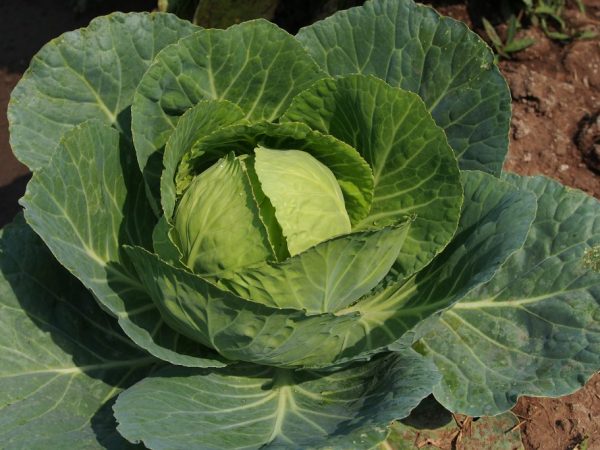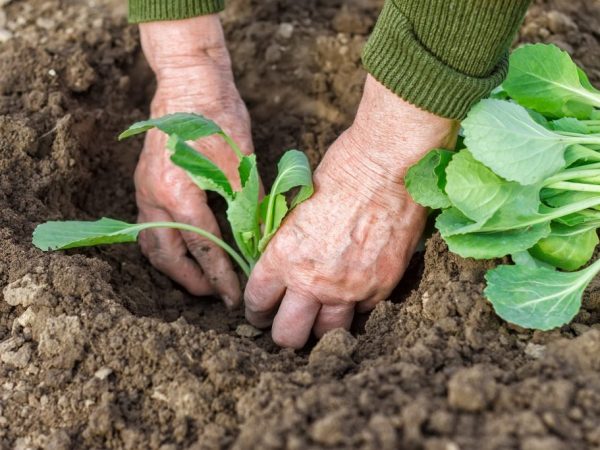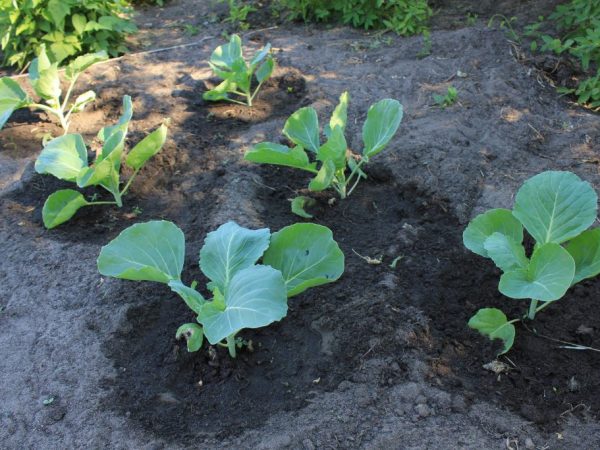Characteristics of cabbage variety Centurion f1
Cabbage Centurion is a hybrid of French selection, which has proven itself well due to its high yield and stable fruiting. It is suitable for growing in different regions.

Characteristics of cabbage variety Centurion f1
Characteristics of the variety
The variety belongs to mid-season hybrids, from the moment of sowing the seeds to ripening it takes 120-125 days. It has an average yield of 120 tons per hectare. Can be grown under film covers and in the open field. It is suitable for double crop rotation. White cabbage of this variety is well transported and can be stored all winter.
Cabbage Centurion F1 is highly resistant to fusarium, rarely affected by thrips, tolerates temperature fluctuations and drought without losing the quality of the crop. The variety is undemanding to the soil.
Description of the head of cabbage:
- heads are even, large, with tight-fitting leaves.
- the color is green with a blue tint;
- round shape;
- weight 2.5-3.5 kg;
- density 4.3 points;
- stump is short, small;
- leaves are smooth, thin, with a waxy bloom.
In section, the head of cabbage is white with a very dense structure.
This cabbage is suitable for all kinds of culinary processing, has a pleasant sweetish taste and is suitable for fresh salads, does not lose its density when sourdough and remains crispy.
Sowing and planting in the ground
White cabbage is grown in seedlings. Sow cabbage seeds of the Centurion variety, starting from the 20th of March.
For sowing, a universal nutritious soil mixture is suitable. It is disinfected before use. To do this, water the soil with boiling water or a slightly pink solution of potassium permanganate. Before sowing, seeds can be treated with a growth stimulant:
| P / p No. | name | Dosing ml / 100 ml of water | Soaking time, h |
| 1 | Pennant | 2 | 1,5-2 |
| 2 | Epin | 1 | 0,5 |
| 3 | Heteroauxin | 0,6 | 6 |
The prepared seeds are sown into the ground to a depth of 1-1.5 cm, seedlings appear in 7-10 days. For containers with seedlings, choose a sunny place with an air temperature above 18 ° C. Young plants are watered with small portions of room temperature water as the soil dries up. At the age of 10-14 days, the seedlings are dived in separate containers (peat pots, plastic cups, seedling cassettes).
Landing in open ground

Seedlings are planted in heated soil
Seedlings of cabbage Centurion f1 are planted in the ground when it reaches a height of 15-20 cm and has 4-5 true leaves, and the ground warms up to 12-14 ° C. Before planting, the seedlings are hardened, and for this they are taken outside for several hours every day. The time spent by plants in the open air is gradually increased.
Seedlings are planted in prepared and carefully dug beds.
Cabbage holes are made in rows according to the scheme 30 x 40 cm. A mixture of sand, humus and ash is laid out in them, watered with water, the seedlings are carefully planted together with an earthen clod. If the average air temperature is below 15 ° C or there is a threat of frost, the bed is covered with agrofibre or film.
Care
A stable and high yield of cabbage depends on proper care throughout the growing season.
Watering
Centurion F1 can withstand periods of drought, but regular, moderate watering is required for good growth and good quality heads. Watering rules:
- The water should be warm, with a temperature above 20 ° C.
- It is better to water in shallow furrows between rows.
- In a sunny hot period, it is watered every 2-3 days, in cloudy weather - once every 6-7 days.
- Do not overflow and allow water to stagnate.
- After watering or rain, you need to loosen the aisles.
- During the period of falling temperatures and rains, watering is stopped.
- Watering is stopped 3-4 weeks before harvesting to avoid cracking the heads.
To improve the quality of water for irrigation, hydrogen peroxide is added to it (for 10 liters of water, 2 tablespoons of peroxide). This will help aerate the soil, as well as disinfect the soil to prevent fungal diseases.
Top dressing
For a good yield and the growth of dense heads of cabbage during the growth period, it is enough to feed the Centurion cabbage twice. Mineral and organic fertilizers are suitable for feeding. It is important to provide a sufficient amount of nitrogen in the initial period of growth and to enrich the soil with phosphorus and potassium at the time of the head ovary.
The first feeding is carried out 14-21 days after planting seedlings in open ground. Top dressing options:
- 5 liters of rotted cow manure is dissolved in 10 liters of water, mixed well, infused for 12-24 hours, diluted in a ratio of 1: 5 before use and the aisles are shed.
- Urea (30 g) is dissolved in 10 l of warm water. For one plant, 200 ml of solution is enough.
- Ammonium nitrate (20 g) is dissolved in a bucket of water. The resulting solution is sprayed over the leaves.
- Mix in 10 liters of water 1 tbsp. ash and 30 g of superphosphate. Watering the aisles.

After two weeks, the seedlings must be fertilized.
The second feeding is carried out 15-20 days after the first. It provides plants with nutrients for proper growth of the head of cabbage. The following formulations can be used:
- Mix 0.5 l of chicken manure with 30 g of superphosphate and dissolve in a bucket of water. Insist 12 hours, stirring occasionally. Before use, dilute with water in a ratio of 1: 5 and only then water.
- Pour 10 liters of warm water with 1 kg of chopped fresh nettle, add 2 tbsp. l. superphosphate. Insist 1 day. For one plant, 200 ml of ready-made feeding is enough.
- Pour 2 cups of wood ash with a bucket of water, mix well, water the aisles, and spray over the leaf.
Diseases
The centurion, like many hybrids, exhibits resistance to various kinds of fungal and viral diseases, but if agricultural technology is not followed or difficult weather conditions, such diseases may develop:
- keel - growths appear on the roots, cabbage stops growing, it is easily removed from the soil;
- parasporosis - gray and yellowish spots appear on the leaves, the leaves gradually wither and dry out;
- fusarium - yellow spots appear on the leaves near the veins, gradually the leaf dries up;
- turnip mosaic - dark spots appear, which grow and spread over all leaves, as a result, the head of cabbage is damaged and not suitable for use.
To prevent the defeat of diseases, you need to carefully weed out, loosen the soil, and prevent waterlogging of the soil. Also, before sowing seeds, soil and seeds are disinfected. If a disease is detected, the affected plants are removed, and the plantings are treated with special fungicidal agents.
Pests
Centurion f1 is resistant to thrips, but can be affected by other pests common to cabbage.
Most often these are aphids, cabbage flies, cruciferous fleas. They can cause significant damage to crops and can also transmit disease.
As a preventive measure, the leaves are sprinkled with wood ash every 10 days. You can also spray with garlic infusion.For cooking, you need 2-3 heads of garlic, they need to be chopped and filled with 5 liters of hot water, allowed to cool and sprayed on the plants.
Conclusion
Centurion is a high-quality hybrid that will allow you to get a high yield with good taste and a long shelf life. Correct agricultural technology, feeding and prevention of diseases and pests allow you to get high yields.


